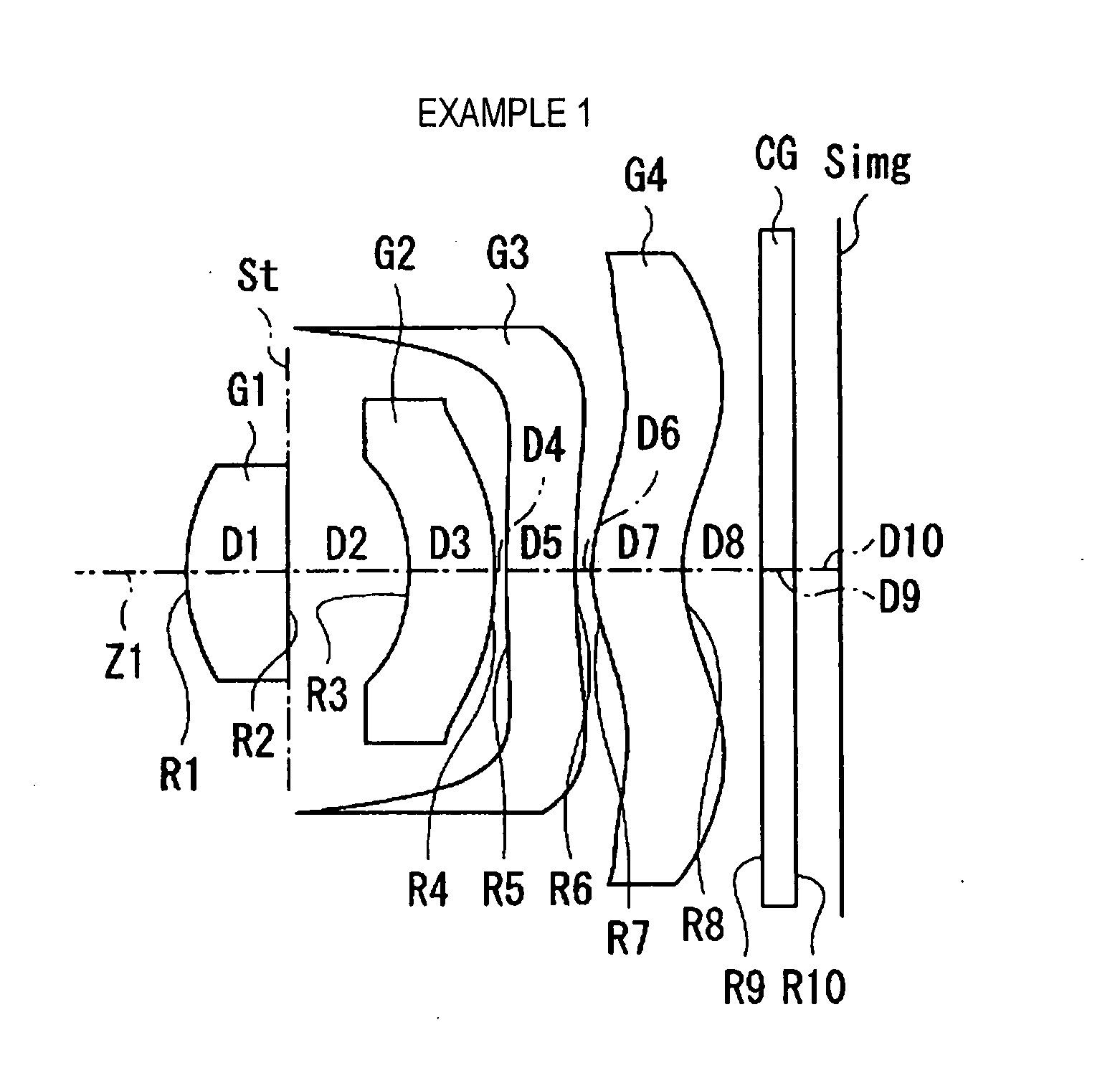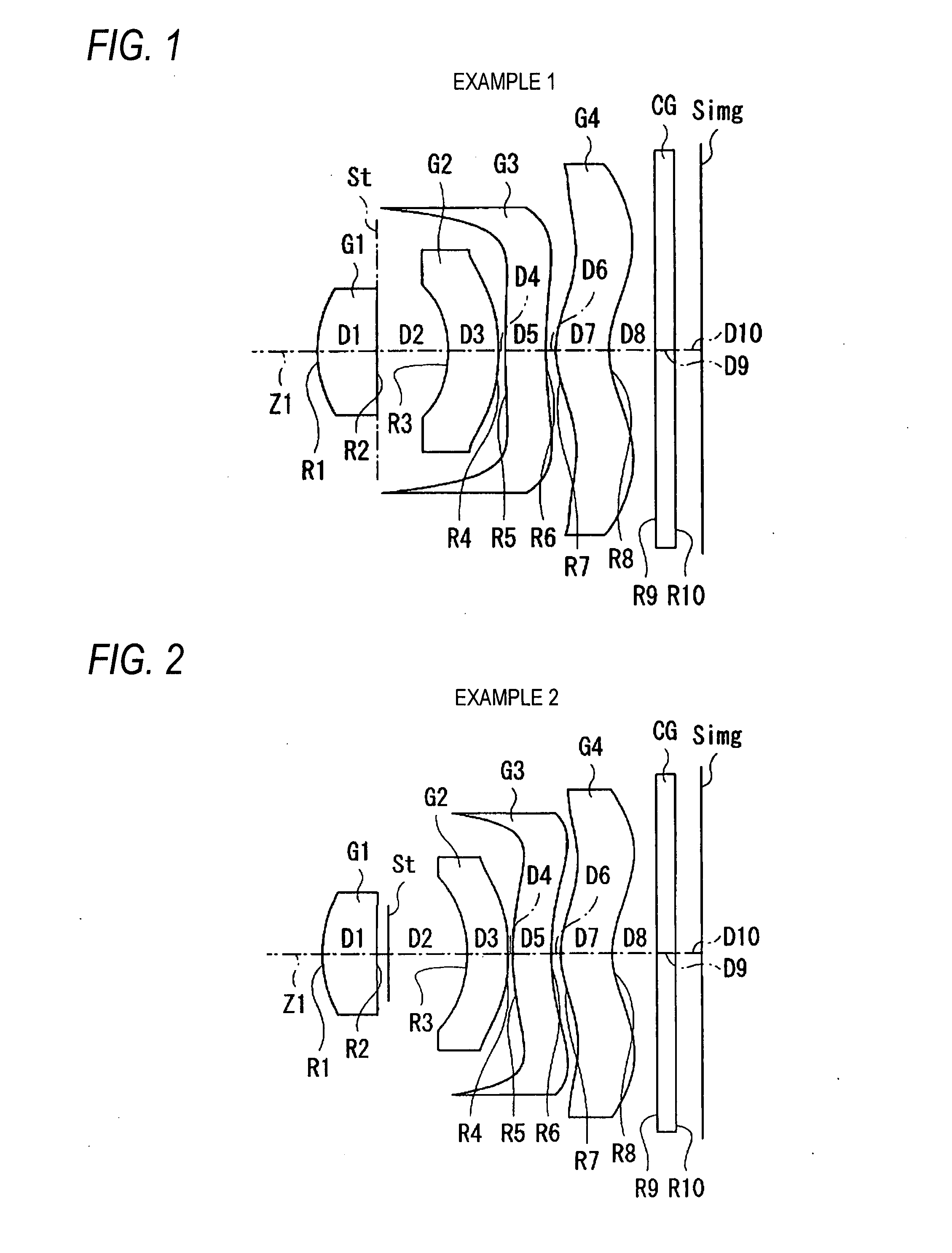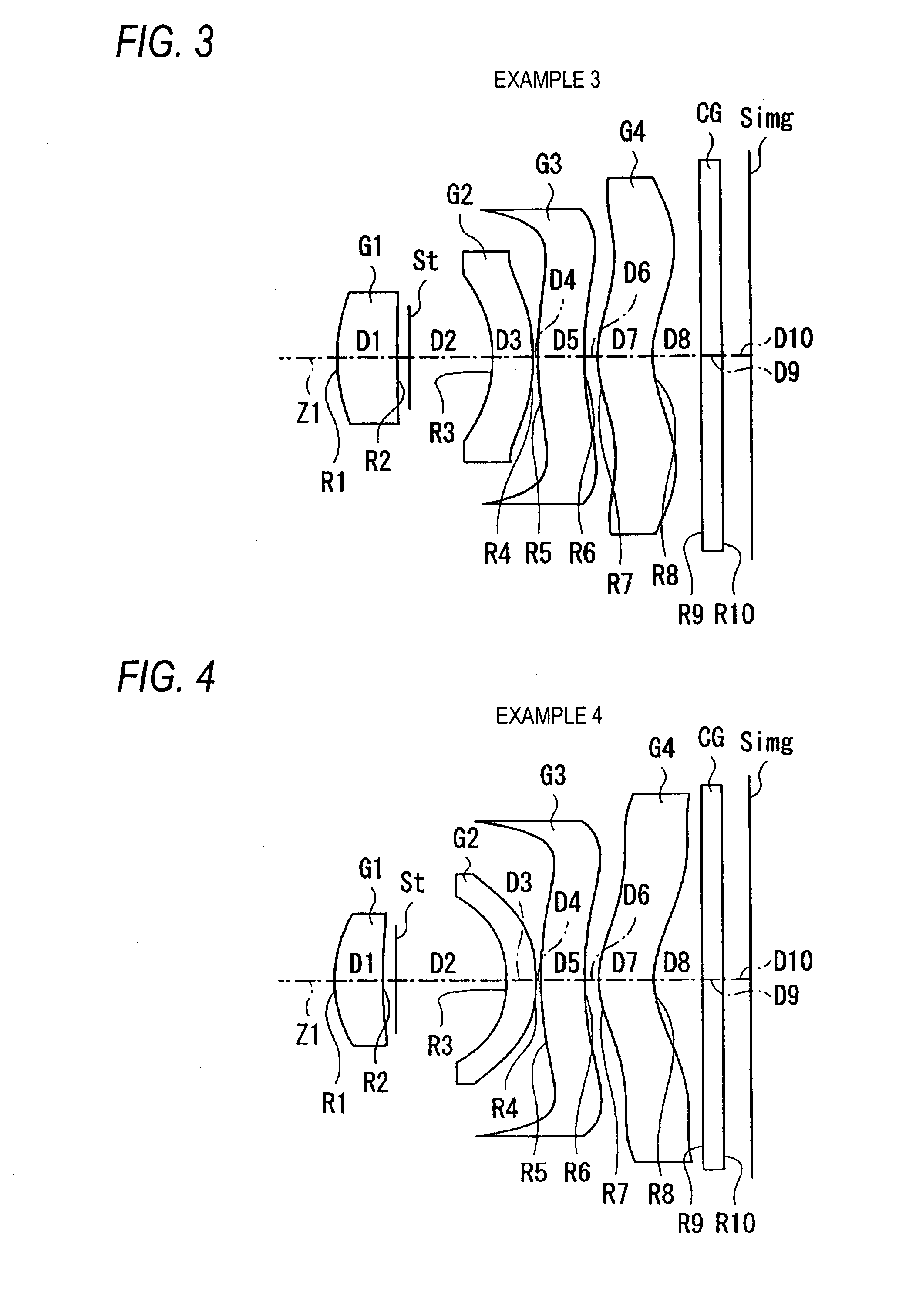Imaging lens
a technology of imaging lens and focusing lens, which is applied in the field of imaging lens, can solve the problems of easy increase of manufacturing cost, increase of number of pixels included in imaging device, and increase in cost performance and compactness, and achieve the effects of reducing various aberrations, reducing the weight of imaging lens, and high aberration performan
- Summary
- Abstract
- Description
- Claims
- Application Information
AI Technical Summary
Benefits of technology
Problems solved by technology
Method used
Image
Examples
Embodiment Construction
to 6, corresponding to conditional expressions (1) to (7);
[0036]FIGS. 20A to 20C show aberrations in the imaging lens according to Example 1, FIG. 20A shows the spherical aberration, FIG. 20B shows the astigmatism, and FIG. 20C shows distortion;
[0037]FIGS. 21A to 21C show aberrations in the imaging lens according to Example 2, FIG. 21A shows the spherical aberration, FIG. 21B shows the astigmatism, and FIG. 21C shows distortion;
[0038]FIGS. 22A to 22C show aberrations in the imaging lens according to Example 3, FIG. 22A shows the spherical aberration, FIG. 22B shows the astigmatism, and FIG. 22C shows distortion;
[0039]FIGS. 23A to 23C show aberrations in the imaging lens according to Example 4, FIG. 23A shows the spherical aberration, FIG. 23B shows the astigmatism, and FIG. 23C shows distortion;
[0040]FIGS. 24A to 24C show aberrations in the imaging lens according to Example 5, FIG. 24A shows the spherical aberration, FIG. 24B shows the astigmatism, and FIG. 24C shows distortion; and...
PUM
 Login to View More
Login to View More Abstract
Description
Claims
Application Information
 Login to View More
Login to View More - R&D
- Intellectual Property
- Life Sciences
- Materials
- Tech Scout
- Unparalleled Data Quality
- Higher Quality Content
- 60% Fewer Hallucinations
Browse by: Latest US Patents, China's latest patents, Technical Efficacy Thesaurus, Application Domain, Technology Topic, Popular Technical Reports.
© 2025 PatSnap. All rights reserved.Legal|Privacy policy|Modern Slavery Act Transparency Statement|Sitemap|About US| Contact US: help@patsnap.com



